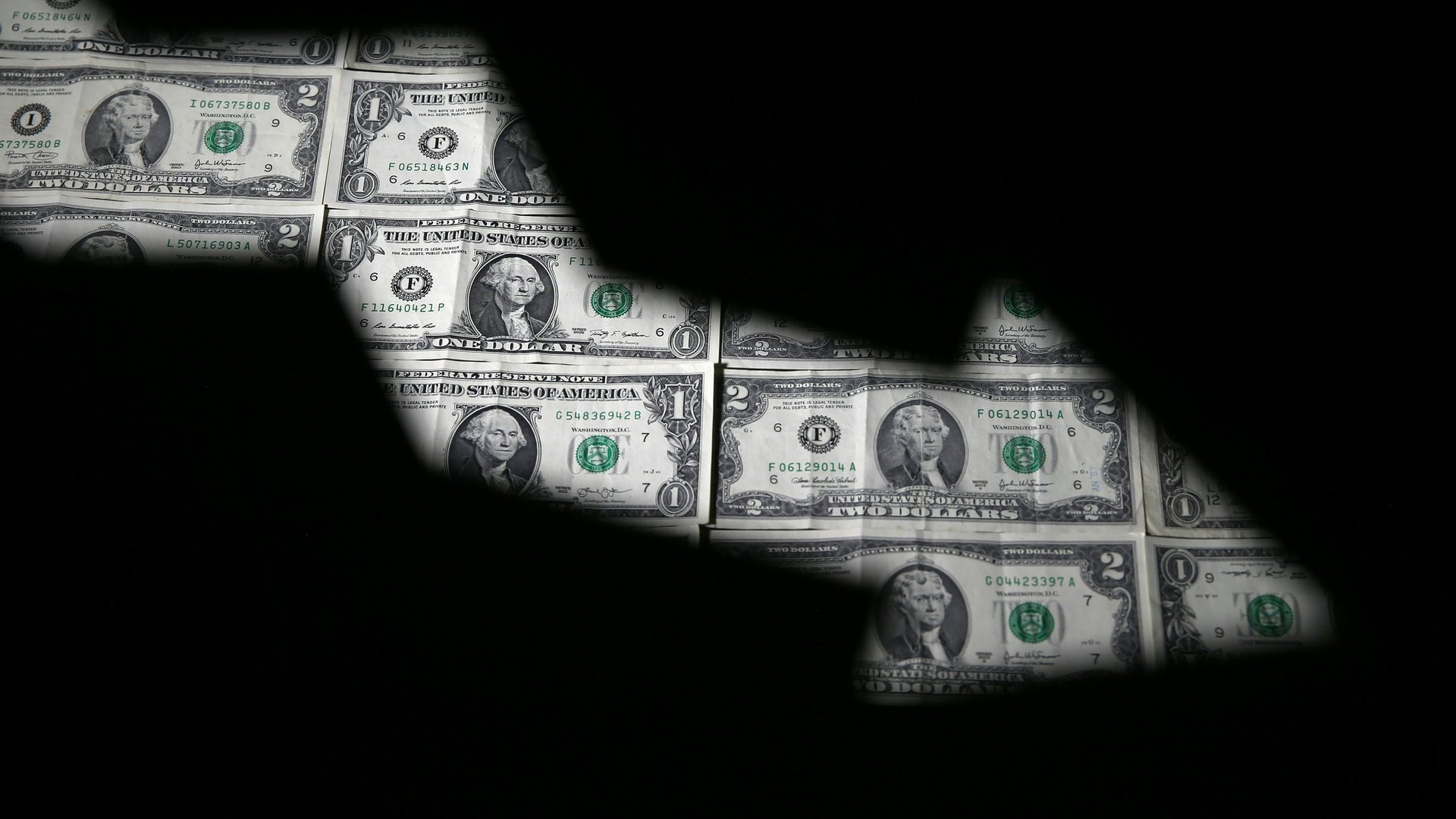Here’s something weird: The dollar is, like, totally ignoring the Fed’s rate hikes
Everyone loves to talk about the unrelenting strength of the US dollar these days. Experts say it’s fueling the problems of emerging markets like Argentina and Turkey, while Donald Trump complains that it’s hurting his country’s competitive advantage. Worse yet, the story goes, the Federal Reserve’s impending rate hikes will likely invigorate the dollar even more.


Everyone loves to talk about the unrelenting strength of the US dollar these days. Experts say it’s fueling the problems of emerging markets like Argentina and Turkey, while Donald Trump complains that it’s hurting his country’s competitive advantage. Worse yet, the story goes, the Federal Reserve’s impending rate hikes will likely invigorate the dollar even more.
That’s the popular lore of the almighty greenback, anyway. But Societe Generale global strategist Kit Juckes says we’re getting a big part of the story—the relationship between Fed policy and dollar strength—wrong.
“The dollar-will-rise-as-Fed-hikes narrative is admittedly a nice story with a ring of logic to it, but it is a canard,” Juckes and colleagues write in a recent note, arguing that “there is little to support the proposition that Fed hikes will now surely drive the dollar higher.”
According to conventional wisdom, a combination of hardy US growth, the Fed’s rate increases, and the likelihood of more hikes in the hopper should have been steadily pushing up the greenback’s value.
Yet as Juckes points out, it’s “not obvious that Fed rate hikes have boosted” the dollar. Since the Fed’s first hike in mid-December 2015, it’s upped rates six more times (with another one due this month). Yet the dollar is still about 4% weaker than it was when the Fed started tightening.
The global context makes the dollar’s recent performance even weirder. While the Fed was starting to hike, two of the world’s other major central banks, the European Central Bank and the Bank of Japan, were doing the opposite, Juckes points out. Both ramped up quantitative easing—which pumped extra money into the economy—and thrust their rates further into negative territory. Since they’re a few years behind the Fed in their monetary cycles, neither the ECB nor the BoJ is poised to pull back in the immediate future.
So how should that influence the dollar, euro and yen? Loose monetary policies should increase the amount of money sloshing around an economy. That abundance of cash is supposed to stimulate business activity by lowering borrowing costs. The simple logic of supply and demand suggests that a nation’s loose monetary policy should also weaken its currency’s value versus those of other countries. And this logic holds even more if those other countries are tightening their monetary policies—as the US has been doing—making their own money scarcer.
So, all else equal, the euro and the yen should have been weakening against the dollar. That sure hasn’t happened, though. Since mid-December 2015, the dollar has lost nearly 6% of its value against the euro…
… and a whopping 9% against the yen (note that the line in both charts falls as the dollar weakens).
One of the biggest reasons for the dollar’s puzzling torpor in the face of Fed action is simply that the greenback is still more expensive than it should be, argues SocGen. Starting in 2014, it climbed sharply, reaching its zenith in January 2017. At that point, notes Juckes, that the greenback was stronger than it was during the last business cycle peak, way back in 2002, in real, trade-weighted terms.
The dollar has been making its way down from that pricey pinnacle to the ridges of fairer value (or, at least, it had until the surge of the last couple months). But it still has a long way to go—which may be part of why rate hikes haven’t been driving its appreciation much of late.
Now, clearly, Fed policy is still a key factor in the dollar’s fate. For one, anticipation that the Fed would finally stop pushing down US interest rates was partially behind the dollar’s 2014 surge, as investors parked in riskier assets and currencies cashed out to bring their money home.
And of course, monetary policy and economic health are intertwined. In addition to prompting the Fed to raise rates, America’s outperformance of Europe, Japan, and others in 2014 would have made its assets more attractive to investors.
But the trends of the last year suggest that countervailing variables may also be big determinants of dollar value. On that last point, for instance, Juckes and many other analysts say the US business cycle has “matured”—meaning it’s due for a downturn. In theory, the dollar should therefore weaken.
Then there’s Trump’s grumbling about dollar strength and currency manipulation to consider. “Given the Treasury Department’s existing authority to intervene in the FX market, one cannot rule out more forceful measures from the Trump administration in the event of an extension of the dollar rally,” says Juckes. That possibility could be discouraging investors from betting on the dollar, for fear that it won’t hold its value.
There’s also the strong likelihood that Trump’s fiscal policies will widen the US’s budget and current account deficits. A growing negative balance on both accounts—a phenomenon economists sometimes call “twin deficits“—might in theory pressure the dollar to weaken (though the dollar’s global reserve currency status muddies the logic somewhat). Plus, there are two sides to every currency story. For example, the dollar’s slide versus the euro could be driven, too, by the prospect that the ECB will start hiking rates in the next year or so.
The revaluation of the dollar should ease the pressure on emerging market economies saddled with dollar-denominated debt. And by making US exports more competitive, it might also calm geopolitical tensions, assuaging Trump’s currency angst. So if SocGen turns out to be right about the lessening of Fed influence over the dollar, regardless of the reasons, it sure would cut the global economy a blessed bit of slack.